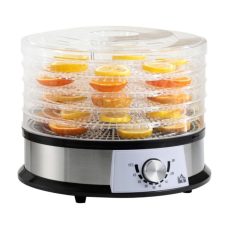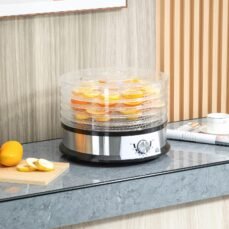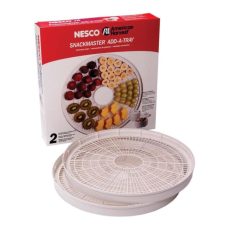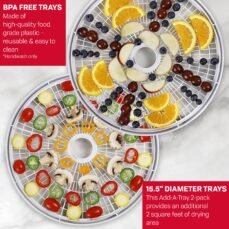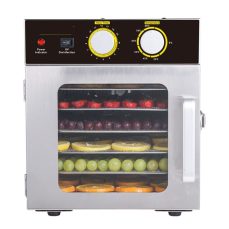Food Dehydrator: Preserve Food with Ease and Convenience
A food dehydrator is the perfect kitchen appliance for preserving your favorite foods. Whether you’re drying fruits, vegetables, meats, or herbs, a food dehydrator machine helps you achieve professional-quality results with minimal effort. Ideal for creating healthy snacks like jerky, dried fruit, and vegetable chips, a food dryer removes moisture, extending shelf life and retaining nutrients. With various options available, from stainless steel to digital dehydrators, you can find the perfect machine for your needs.
A fruit dehydrator or vegetable dehydrator helps you make homemade snacks without additives or preservatives. If you’re into making jerky, a meat dehydrator or jerky dehydrator is a great investment. The Excalibur food dehydrator is one of the most popular brands, offering 9 tray dehydrators with adjustable temperature controls, making it easy to dry a variety of foods at once.
Whether you’re looking for a commercial food dehydrator for large batches or a home dehydrator for personal use, there’s a model to suit your needs. With features like stainless steel trays and temperature control, a food dehydrator for jerky or fruits provides exceptional results.
Key Features
- Variety of Sizes: From mini dehydrators to large food dehydrators with up to 10 trays, there’s a model for every household or commercial need.
- Efficient Drying: Digital dehydrators and electric food dehydrators are designed to dry food evenly, preserving flavor, texture, and nutrients.
- Multiple Functions: Perfect for drying a wide range of foods, including meats, fruits, vegetables, and herbs.
- Stainless Steel Trays: Many models feature stainless steel trays for durability and easy cleaning, ideal for commercial food dehydrator machines.
- Temperature Control: The best dehydrator machines offer temperature control for precise drying, ensuring your food is dried safely without over-heating.
- Easy to Use: With dehydrator trays and simple controls, food dehydration is as easy as placing the food inside and setting the timer.
Benefits
- Preserve Food for Longer: Drying food extends shelf life, reducing waste and saving money by storing seasonal foods.
- Healthy Snacks: Dehydrated fruits, vegetables, and meats offer healthy snacks without preservatives or added sugars.
- Convenience:A food dehydrator makes it easy to prepare snacks like jerky and dried fruit at home.
- Flavor Retention: Drying at low temperatures preserves natural flavor and nutrients, making snacks tasty and nutritious.
- Cost-Effective: Making your own dried foods with a food dehydrator is more affordable than buying pre-packaged options, especially for those who dry large quantities.
Safety Considerations
- Monitor Drying Times: Always follow the manufacturer’s instructions for drying times and temperature settings to prevent over-drying or under-drying.
- Avoid Overloading: Ensure proper airflow by not overloading the dehydrator trays, as this can affect the efficiency and results of the drying process.
- Proper Storage: After drying food, store it in airtight containers to maintain freshness and prevent rehydration. Keep dried food in a cool, dark, and dry place.
- Safe Handling of Meat: If using a meat dehydrator, ensure proper handling and storage to avoid foodborne illness. Always ensure the meat is thoroughly cooked before dehydrating.

